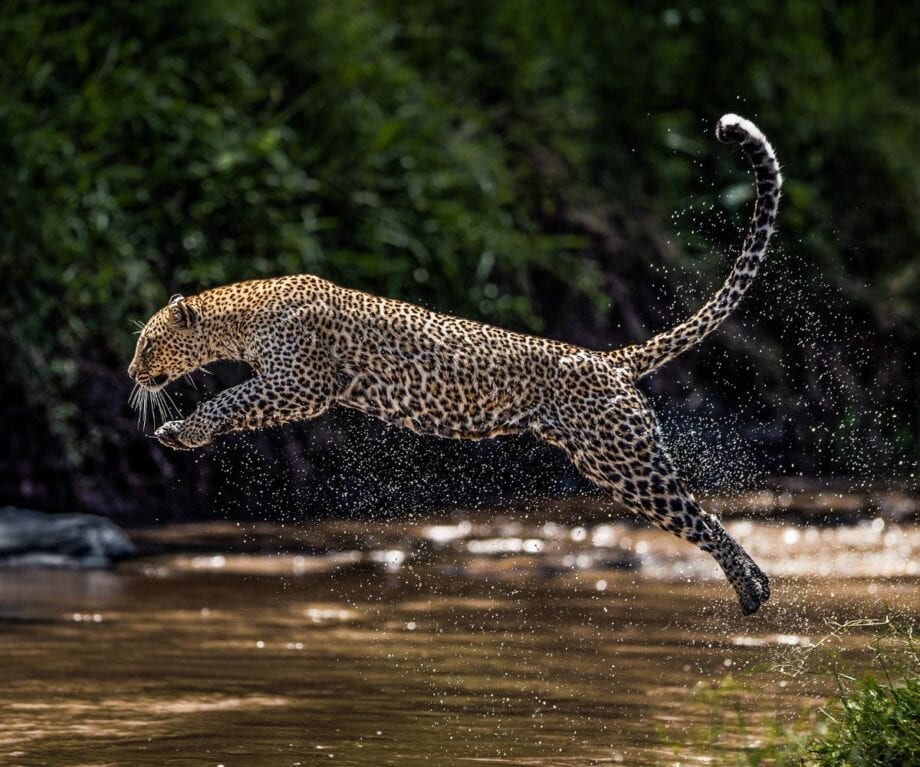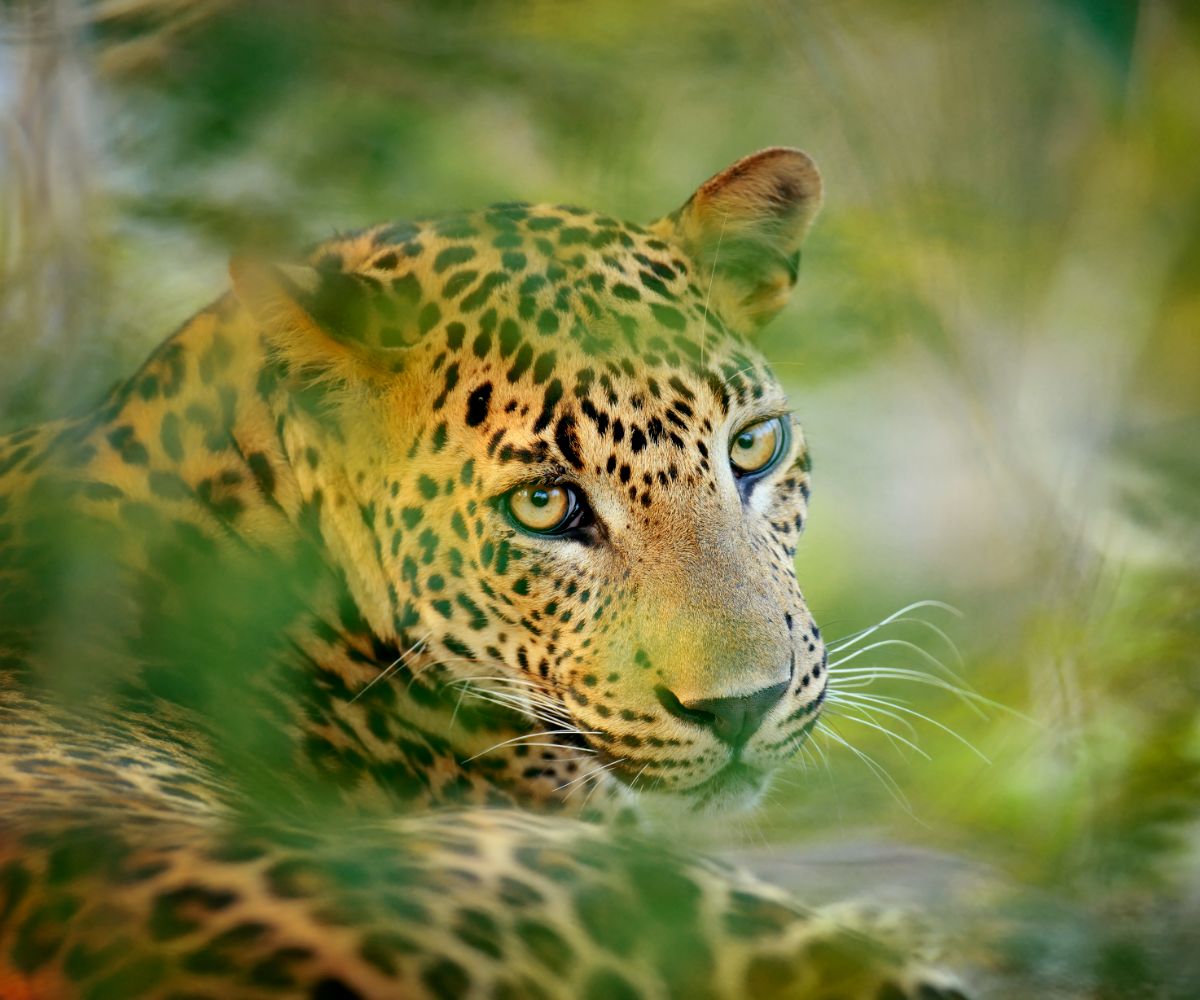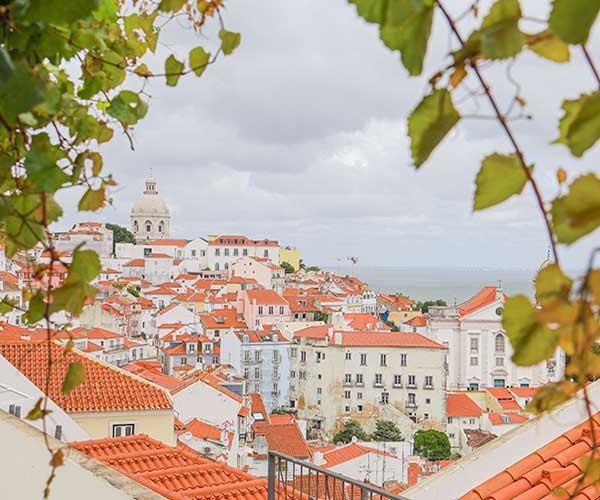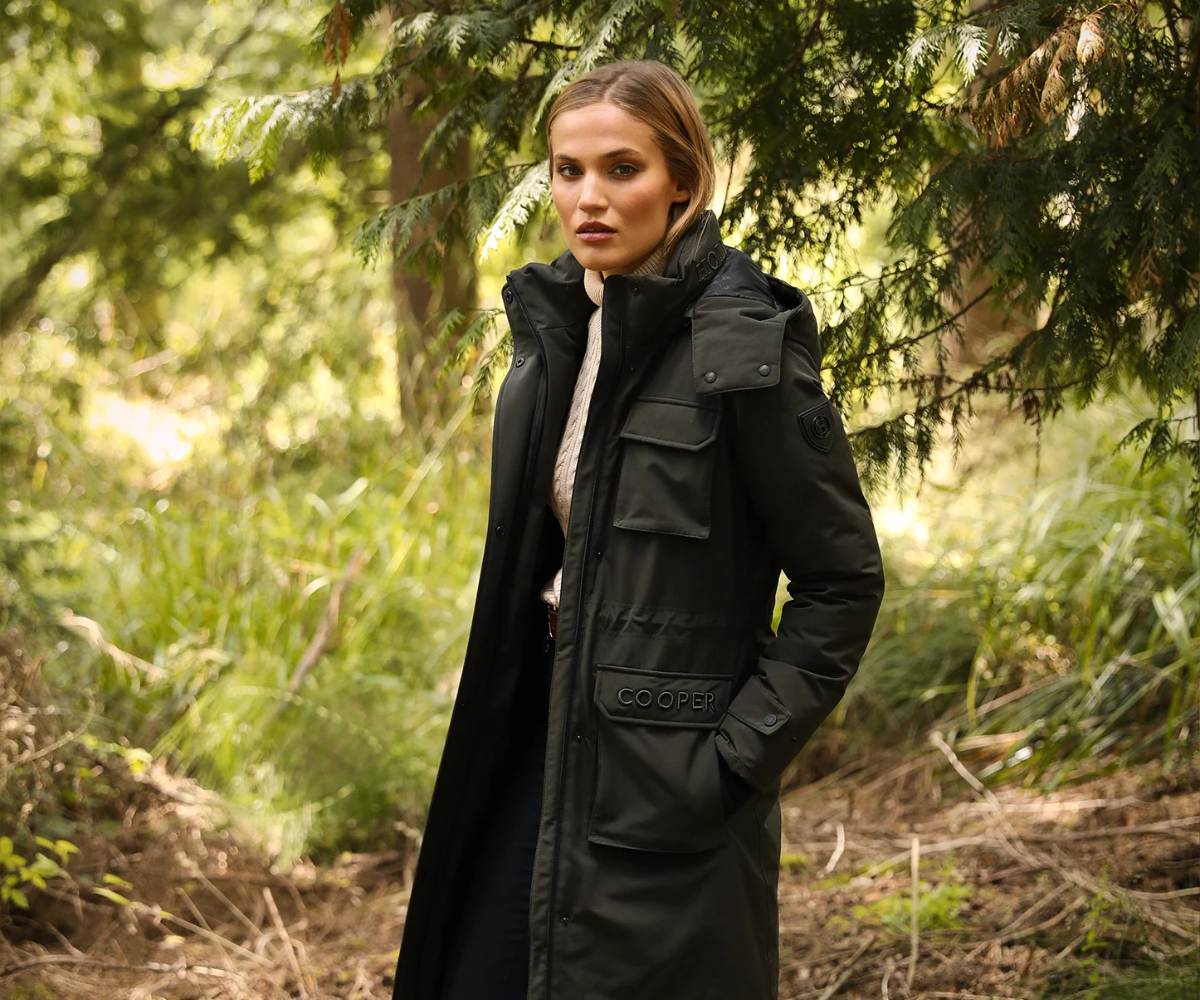With an impala in its sights, the leopard slowly and stealthily stalks forward. Her head is low and her legs are bent. She’s the master of camouflage and her light golden-brown fur, with black spots and rosettes blends into the long grass. She makes clever use of the cover. Her plan is clearly to ambush her prey, and she crouches low, trying to get as close as possible to her target without being seen. Suddenly she makes a brief and explosive charge. Pouncing on her prey, she dispatches it with a quick bite to the neck, before carrying it up into a tree, away from potential scavengers, for the final feast.
Leopards are the most versatile and adaptable of the big cats, but despite this adaptability, global populations and distribution are in decline. Loss of habitat and prey, as well as intense persecution as livestock killers, is the chief threat to this magnificent big cat. They’ve long been hunted in southern Asia for their skin, teeth and bones, supplying the Chinese medicinal trade, and in west and central Africa, they are hunted for their whiskers, tails and claws.


is the collective name for a series of stunning, hardback coffee table books created by British wildlife photographer Margot Raggett, who gave up a career as CEO of a London PR company and went to Africa to pursue her love of wildlife photography and who, in who in 2014 began asking fellow wildlife photographers if they would contribute to a fundraising book for animal conservation. Their response was unanimous and the first book in the series, Remembering Elephants, was published in 2016, with images donated by some of the world’s top wildlife photographers. Initially, Margot thought the book would be a one-off, but following the success of Remembering Elephants, she was inspired to push on. Next came Remembering Rhinos, then Remembering Great Apes, followed by Lions, Cheetah, African Wild Dogs, Bears, and in this year’s edition Leopards take centre stage.


There are eight species of leopard – African, Amur, Arabian, Indian, Indochinese, Javan, Sri Lankan and Persian and Remembering Leopards focuses on these magnificent big cats, animals that have been listed as vulnerable by the IUCN since 1986. Margot believes that showcasing beautiful images of these big cats will raise awareness of their plight and capture the public’s attention. “We need people to see what we might lose if conservation efforts aren’t successful,” she says, “photography is a great way to do that.” She goes on, “Our mission is not only to celebrate leopards but to raise urgent awareness that they are in decline and to raise funds for those working to protect them.”



I sat down to chat with Margot about Remembering Wildlife, past, present and future…
1. Your background is in the corporate world of PR. Remembering Wildlife was a real change in trajectory, could you ever have anticipated being where you are now, and do you have any regrets?
I certainly never imagined, when I set out to make that first book, that eight years on, we’d be where we are now. My ambition that year was to raise £100,000 for conservation, which I thought was quite a lot to ask, so to now be close to £1.1 million donated to conservation projects is incredible. I have no regrets. I feel I’ve found my cause and my reason for being here.
2. With the ongoing challenges in conservation, how do you see the role of initiatives like Remembering Wildlife in shaping the future of preserving endangered species?
I think our role is to keep making everyone as aware as we can about the fact that so many species are endangered. I think it’s too easy for people not to realize what’s going on – we’ve just published Remembering Leopards, yet many people think that leopards are not in trouble at all! We’ve got the opportunity to shine a spotlight on what’s going on out there, and that’s what I want to continue doing.
3. You once said “Remembering Wildlife is like one hose fighting a forest fire… We’re proudly standing alongside lots of amazing organizations with that hose.” Do you feel your ‘hose’ is really making a difference?
It is hard to quantify it, but I stand by my statement. If we were one less hose, I think it’d be a significant hose that was removed. With over 37,000 books sold, we’ve certainly opened a lot of people’s eyes to some of the crises facing species out there. The feedback I get from organizations that are so grateful for the support, is that we must, must, must keep going. I definitely think there would be less funding going out if we weren’t doing what we’re doing.



4. As an advocate for conservation, what are your thoughts on the role of education in shaping a sustainable future for wildlife preservation?
I certainly think education is critical, not just for young people, but for people of all ages. By putting the Remembering Wildlife series out there, we’re hoping to educate a wider public and the publicity we get around the books and interviews such as this one, also raises awareness and educates.
In terms of children, we’ve supported several initiatives that have been specifically targeted at young children growing up in Africa.
5. The issue of the illegal wildlife trade remains a significant threat to endangered species. How does Remembering Wildlife aim to address this critical issue?
The different projects we support, attack the problem of Illegal wildlife trade in different ways – whether they’re doing anti-poaching work, education of kids, education of adults, trying to catch poachers, or trying to convict them – we try to fight the illegal wildlife trade by supporting organizations that are fighting on the frontline.
6. Looking ahead, what milestones or achievements do you hope Remembering Wildlife will reach in the next five years?
At the moment, we’ve raised about USD$1.4 million. I’ve now got my sights on USD$2 million as the next target. As long as people are interested and want to keep buying our books, we’ll certainly continue to bring them out.


Over 50 wildlife photographers have contributed to Remembering Leopards, as their way of giving back to one of the species they make their livings from by photographing. The book is a collection of 80 stunning colour photographs, taken by some of the world’s top wildlife photographers, including , , , , and Maasai Mara-based , as well as award-winning conservation photographers and . This year’s cover image was taken by .


Of course not all the photographers featured are as well-known. Remembering Wildlife ran a photographic competition for amateur photographers wanting to be included in the book. Around 3,500 images were submitted, from which 20 images were chosen and added to those selected from more known photographers. friend and photographer was one of these competition winners and told me, “For me, it is a privilege to be part of such an amazing project. Leopards are my favourite animal and I love to photograph their beauty but also their movement and behaviour. To have one of my photos in this fundraising book was a photographic highlight, which also helps to raise money for conservation”


Unlike most charity models, Remembering Wildlife doesn’t ask for donations (although they’ll certainly accept them if offered!), they’re in the business of selling you something beautiful and promising that 100% of the profits will go to conservation.
The first donation from Remembering Leopards has already been made, to Wildlife Conservation Society (WCS) in Afghanistan, which has been working to protect snow leopards since 2006. Because of the political situation in Afghanistan, WCS had recently lost the bulk of its core funding and Remembering Wildlife has been able to give them an emergency grant to carry on, and to fund the ongoing employment of eco-guards, selected from local communities in Wakhan National Park. The funds have also been used to counter human-wildlife conflict, by providing predator-proof corrals to house livestock and by educating local communities on other protective measures. “It’s about persuading the local community not to retaliate against animals … and enabling them to live alongside them,” explains Margot.


Leopards may well be the most adaptable of the big cats, but their population numbers and distribution range are still very much under threat. Help save a spot for them in this rapidly changing world by purchasing a copy of Remembering Leopards.
Remembering Wildlife exists to raise awareness of the plight facing wildlife and to raise funds to protect it. Since Remembering Elephants in 2016, more than 230 of the world’s best wildlife photographers have contributed to the Remembering Wildlife series. More than 37,000 books have been sold, and over £1.078 million has been distributed to 68 conservation projects in 31 countries.

Each book costs £49.50 GBP ($60 USD) and you can find out more about the projects that Remembering Wildlife has already funded on their website.
Did you enjoy this article?
Receive similar content direct to your inbox.
Please enable JavaScript in your browser to submit the form




